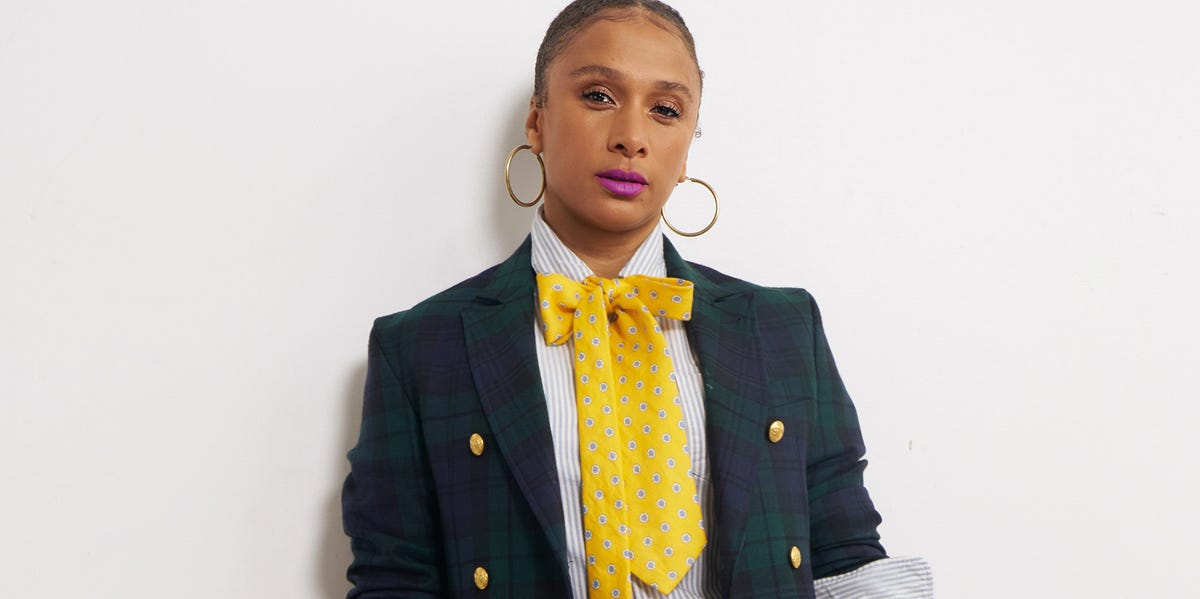There are few menswear brands with a cult following like Noah’s. Sure, the clothes deserve much of the credit. They’re a seamless mash-up of classic preppy style and ’90s surf and skateboard culture. They’re laid-back hoodies and graphic tees combined with navy sport coats, robust chinos, and madras jackets. Noah does all of this with a focus on slow, responsible production. Wildly popular collaborations with brands like Barbour and Timex—not to mention English goth rockers the Cure—have only boosted the brand’s notoriety.
But when buying Noah, you’re getting into more than the clothes. You’re gaining entry into the community the brand has cultivated, the world it has built, the feelings it evokes. That’s where Noah cofounder Estelle Bailey-Babenzien comes in.
Bailey-Babenzien spearheads the interior design of every Noah location. She and her husband, Brendon Babenzien—who started with a long tenure at Supreme and now serves as men’s creative director of J. Crew in addition to his work at Noah—relaunched the then-stagnant brand in 2015. The stores that dotted Asia, as well as the flagship in New York, are cozy, curated pockets of the couple’s take on America fashion and culture. The clothes seem to interact with the objects around them. Music and books pepper the shelves. Gallery walls feature art from emerging artists. Perfectly placed recycled rugs call back to Noah’s core values of sustainability and responsibility.
When we chat in March, it’s a busy week for Bailey-Babenzien. She’s only a couple days away from the opening of 199 Mulberry, an extension of the flagship in New York’s SoHo. It’s a project that feels like the most complete expression to date of her overarching design ethos. Alongside the brand’s higher-end clothing, the store houses a curation of rare books, records, vintage watches, and art. “I like to think of it as an oversized salon with a few treasures to discover,” Bailey-Babenzien says.
VIDEO
Later this year, a new store in Los Angeles will join Noah’s steadily expanding brick-and-mortar family. In the age of online shopping, physical locations can seem like an afterthought. But for Noah, and for Bailey-Babenzien, spatial experiences are still at the heart of everything.
“These are stores that people could hang out in, and they’ll not just be talking about the clothes but what you do in the clothes, which is more important,” says Bailey-Babenzien.
Her focus on building community traces back to her earlier career, when she flitted between interior design, fashion, and music after graduating from London’s revered Central Saint Martins. Fashion felt too pretentious; the music industry, not open to diversity. What Bailey-Babenzien wanted was the opportunity to carve out her own space. With Noah, the merging of fashion, art, and design—Bailey-Babenzien has designed some pieces of custom furniture and clothing for the brand—was kismet.
In the 2010s, she was a pioneer of the “living room storefront” experience that nearly every aspiring lifestyle brand tries to emulate today. The store in SoHo borrows elements from her husband’s Long Island upbringing and her English childhood, along with influences from her half-Ghanaian heritage as well as local craftsmen. It looks and feels looks less like a traditional retail space and more like the apartment where you want to live—comfortable furniture, lots of openness and natural light. In other words, the kind of space where the menswear elites of lower Manhattan gather with their oat-milk flat whites from down the block, sometimes to peruse the brand’s clothing, sometimes just to be.
“The idea is like, yes, come here. Sure, you can get some nice clothes, learn about the fabrics, whatever. But hang out,” Bailey-Babenzien says. “What else are we talking about? What’s going on in the world? What are you doing? Are you into writing, reading, skateboarding? What is it that kind of makes you tick? So we try to create these environments that foster that and also might provoke conversations.”
As for who can be part of those conversations? Fear not—it isn’t just the menswear influencers you scroll past on Instagram. Unlike many trendy labels, Noah doesn’t do exclusivity. Bailey-Babenzien fondly recalls an experience she had only a few days earlier, when a family of six came into Noah’s store. Most of them bought something they loved—the child, the mom, the dad, even the grandmother, who was enamored of a pair of pants.
“I was like, ‘This is exactly it,’ ” she says. “It can span generations.”





